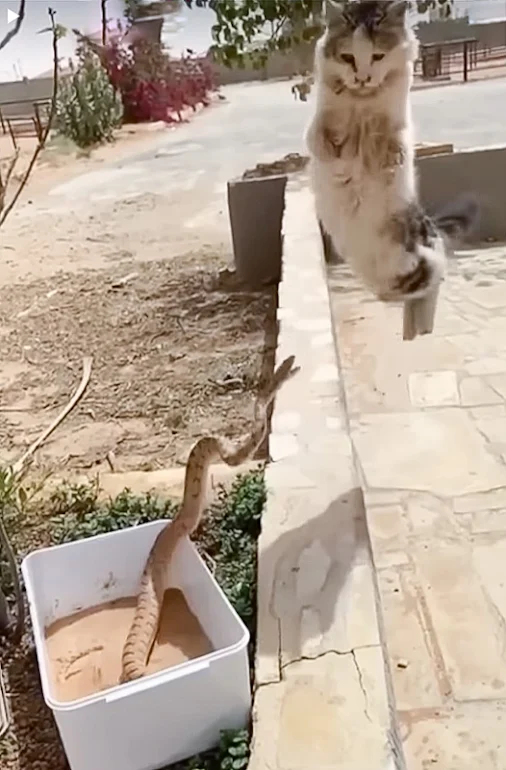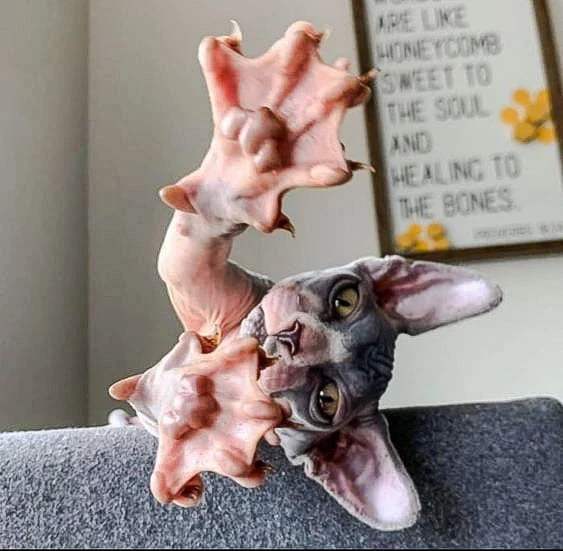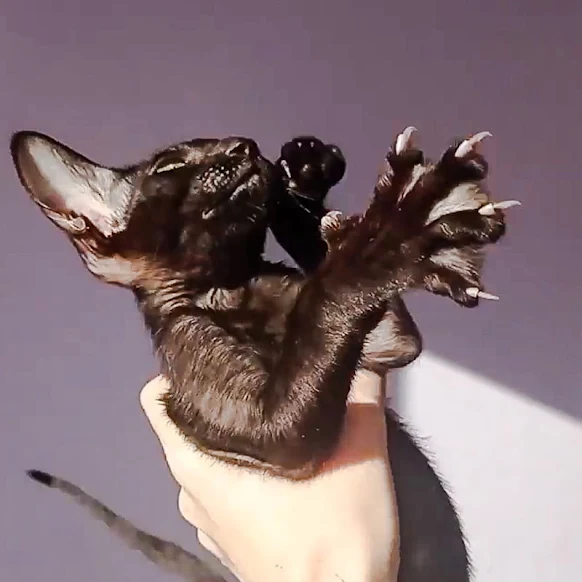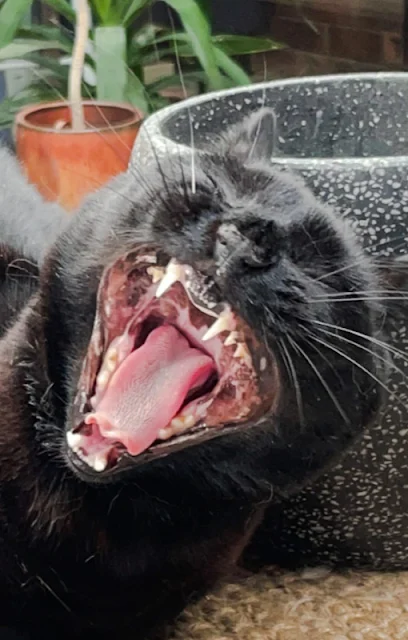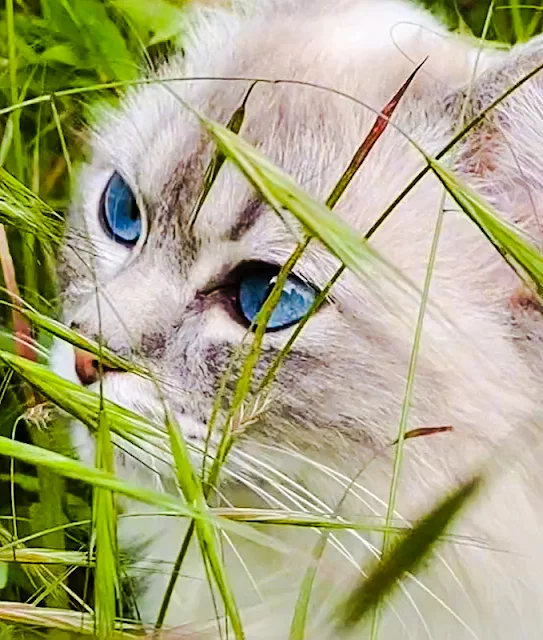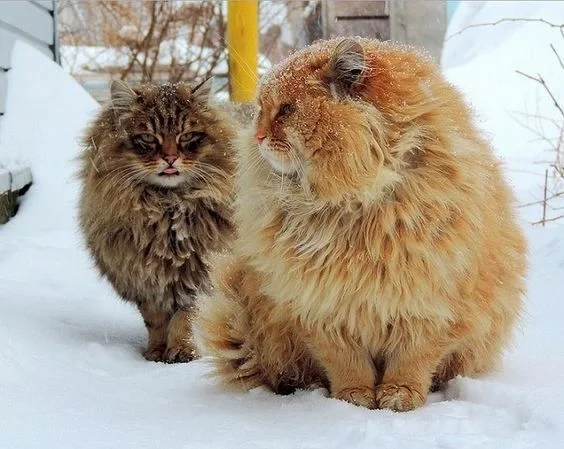A domestic cat's whiskers (and the same, of course, applies to feral and stray cats) are remarkable items of feline anatomy. Most people think of them as serving a single purpose: to measure the width of gaps to tell the cat if she can get through it but they do a lot more than that.
They are very sensitive as at their base there is a mass of nerve endings. This makes cats' whiskers so sensitive they can feel air currents wafting around solid objects which the cat can't see clearly in the dark depths of night even with their super-sensitive eyes.
 |
| Vital cat's whiskers. Image: MikeB |
Night hunting
Whiskers are particularly important when a cat hunts at night. Dr. Desmond Morris in his seminal book Cat Watching tells us that we know whiskers are vital to a cat when hunting at night because if they are damaged, they cannot make a perfectly clean kill in the dark but when they are in perfect condition, they can kill cleaning in the depths of night.
Feelers
They achieve this because these supersensitive appendages a.k.a. vibrissae can feel the neck of the mouse or bird that the cat has caught and armed with the information that whiskers pass back to their brain they are able to visualise the neck and the position of the vertebrae within the neck and deliver their killing nape of the neck bite to split the vertebrae and kill the prey animal.
In this example, the whiskers are acting like feelers and they become the eyes of the domestic cat in the dark. They have a split-second ability to check the body outline of the victim. Dr. Morris believes that the tips of the whiskers "must read off the details of the shape of the prey, like a blind man reading Braille, and in an instant tell the cat how to react".
And in some photographs of cats that have caught prey the whiskers are almost wrapped around the animal's body passing back vital information to the cat's brain about the slightest movement if the prey is still alive.
Nocturnal hunter
And we know that the domestic cat is a primarily nocturnal hunter although they are diurnal meaning they hunt at night and day but they favour dawn and dusk i.e. they are crepuscular. This is because that is the time when prey animals are more active. Because of this whiskers are particularly vital in their success rate in killing prey.
Anatomy
Anatomically speaking, the whiskers are greatly enlarged and stiffened hairs as you no doubt know. They are twice the thickness of ordinary hairs. And as you also might know they are embedded in the tissue of the cat's upper lip to a depth of three times that of other hairs. That last bit you probably didn't realise and deep under the skin they are supplied with a mass of nerve endings as I've mentioned above.
Normally, a cat has 24 whiskers, 12 on each side of the nose. They are arranged in horizontal rows. The length of whiskers varies enormously between cats. Here for example are the amazing whiskers on a female cat:
 |
| Amazing whiskers on a cute female cat. Image in public domain. |
Moveable
They can move forwards when the cat wants to check things out with their whiskers. If you put a cat tease in front of a cat's face you might be lucky enough to see their whiskers dart forwards as if to touch the feathers of the tease.
And they can move backwards when the cat needs to protect them as part of a defensive action. And they can move backwards when for example the cat has their head in a food or a water bowl. This brings up another issue which is "whiskers stress".
Whisker stress
Many people believe that some cat bowls are the wrong shape i.e. they are too deep and too narrow. Cat food bowl should be quite wide and flattish. This allows the whiskers to avoid the sides of the bowl which avoids whiskers stress which is a form of irritation to the cat and it might be so bad as to encourage the cat to not feed. I don't think that happens an awful lot but it may happen in certain individual cats.
Also, the top two rows of whiskers can be moved independently of the bottom two. The strongest whiskers are in rows two and three according to Dr. Morris.
Non-facial whiskers
You will also see whiskers in other parts of the body. For example, there are a few on the cheeks, over the eyes and on the chin. Surprisingly, you might also see some at the back of the front legs. They are all sensitive detectors.
The cat's whiskers
When we say that something is "the cat's whiskers" we mean that it is very good. It is an apt expression because whiskers are indeed very good. They are a very special piece of feline anatomy.
Trimming
For this reason, they should never be trimmed or cut in anyway shape or form. Some people ask whether they can trim a cat's whiskers. The answer quite positively is no as you can understand from the long description above.
 |
| Image: MikeB |
My now deceased sister cut off the whiskers of our family cat when she was a girl. To this day I have no idea why she did it. It was a cruel act.
Hairless cats
Some purebred cats have crinkly whiskers or no whiskers due to a genetic mutation. I am referring to the hairless cats; the Sphynx and Don Sphynx.
 |
| Hairless cat showing poor quality whiskers. Image: Pixels by Pixabay. |
This is an example of how breeding a purebred cat based on a genetic mutation which creates a defect (no hair and poor whiskers) can be cruel to the cat. A hairless cat cannot rely on their whiskers as described above.








